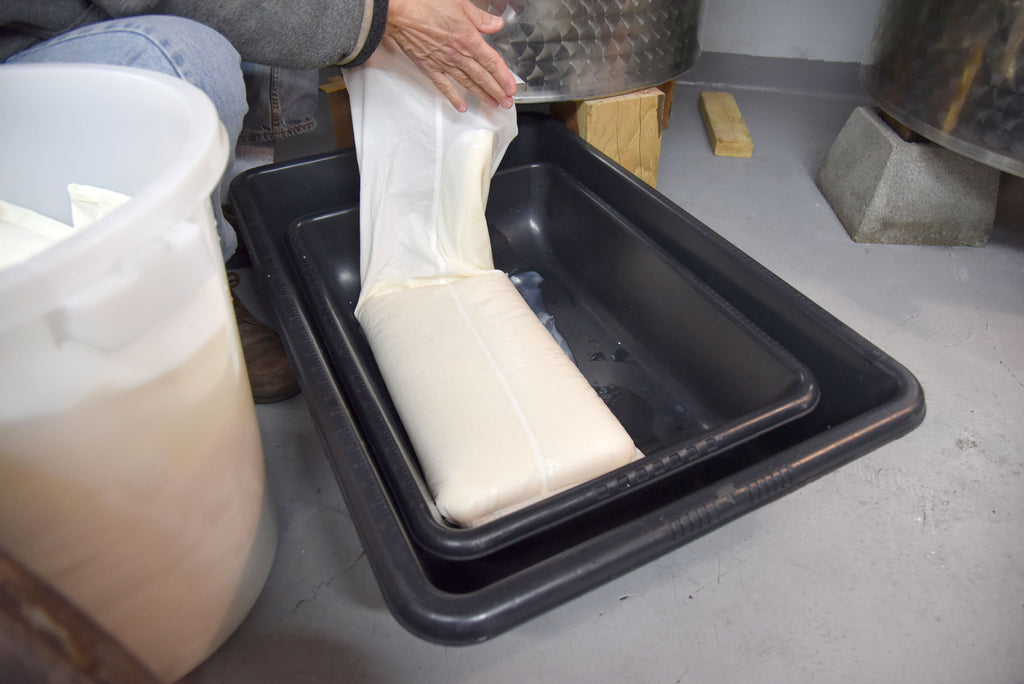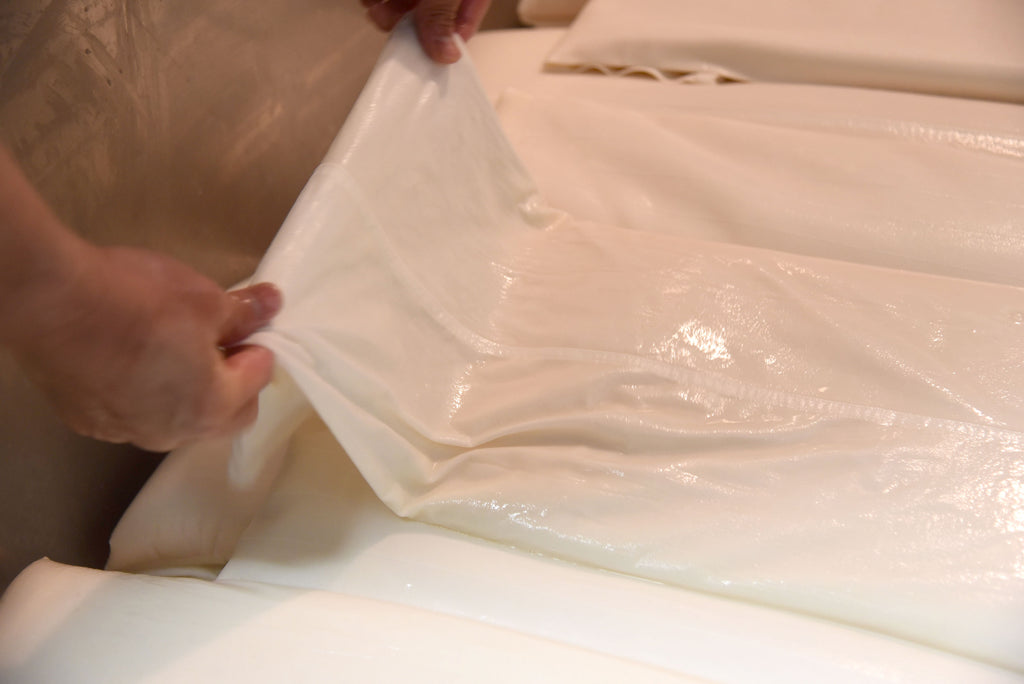
For every batch that Den Sake Brewery releases, we always try to secure all of the Ori that comes along with the release.
Ori, in Japanese, means sediment. In the context of sake, ori sake (also known as orizake) is a style of sake that incorporates the rice particles that settle at the bottom of the tank while aging.
In recent Den batches, the yields have decreased, making this special, Umami Mart exclusive sake even more elusive. To understand why the Ori is so scarce, Yoshi invited us to the brewery to watch his process for pressing and racking sake.
 Den Batch 13 Moromi
Den Batch 13 Moromi
After fermentation, the moromi (fermentation mash) is ready for pressing. At Den Sake Brewery, everything is done by hand, and they use the funashibori (bag) method for pressing sake. This means that the moromi is transferred into sakabukuro (fine meshed bags for pressing sake), one by one. It also means that Ori is possible (mechanized presses leave very little Ori behind, so it is most successfully retrieved by this meticulous hand-pressed method).
 Fill'er up!
Fill'er up!

 Yoshi hoists each bag into the press.
Yoshi hoists each bag into the press.
Each sakabukuro is carefully laid out side-by-side in the press.

 Sakabukuro laid down layer-by-layer
Sakabukuro laid down layer-by-layer

 Tightened and folded over with the flick of the hand.
Tightened and folded over with the flick of the hand.
Yoshi explained to me that the reason why the Ori yield has decreased in the past few batches is because they have switched half of their bags to a higher quality bag that has a finer mesh. You'll see these are the old, looser bags that release more lees (hence, more Ori).
 Sakabukuro with loose weave
Sakabukuro with loose weave
These new bags which look thicker keep more of the lees in. While this is great news for the regular filtered batches, but it's less favorable for us die-hard Ori-heads.
 Thicker sakabukuro with finer weave
Thicker sakabukuro with finer weave
As the bags start to squeeze sake with the force of gravity, you start to see some of the clear liquid coming out of the spigot of the press.


After 50 bags or so, the tank is empty.

Yoshi starts to weigh the press down with stainless steel panels and wooden blocks.


And finally the weighted pulley is gently lowered.

The liquid slowly gets squeezed out over two to three days and gets pumped into a clean tank.

Yoshi gives us a fresh taste.

This fresh genshu (undiluted sake) tasted especially fruity and robust. It'll age for another three weeks and be released as a namazake (unpasteurized sake). Can't wait!

4-5 days later, Yoshi shows us how the Ori sinks to the bottom of the tank. This is the amount of sake that ends up being bottles as Ori.
 Photo by Yoshi Sako
Photo by Yoshi Sako
As you can see, it's only a fraction of the total tank.
 Photo by Yoshi Sako
Photo by Yoshi Sako
Yoshi says, that it's about 1.5% to 2% of the tank.
 Photo by Yoshi Sako
Photo by Yoshi Sako
In any given batch, we get anywhere from 36 to 48 bottles of Ori – so they are fleeting. If you want to get a taste of this sophisticated and slightly bitter, creamy Ori, be ready to pull the trigger as soon as they hit the shelves! Be updated on its release in our weekly e-newsletter.
Additional reading:
Umami Mart Ori by Den Sake Brewery
Meeting Yoshihiro Sake of Oakland's Den Sake Brewery
Photos by Umami Mart and Yoshi Sako




Comments (0)
There are no comments for this article. Be the first one to leave a message!